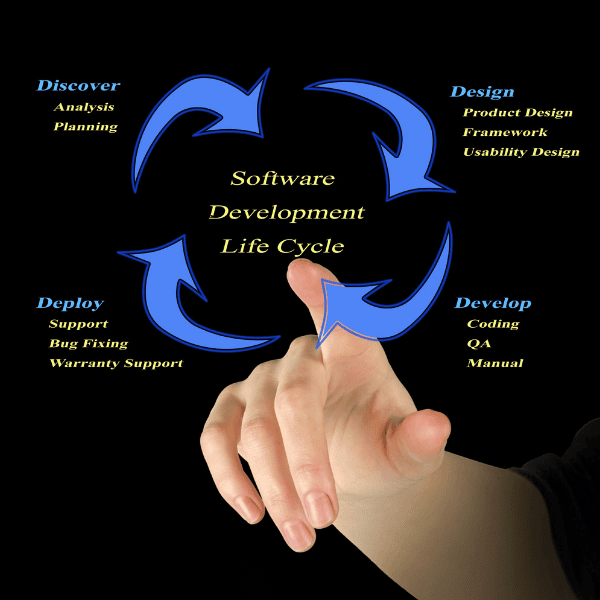Introduction
Augmented reality (AR) stands out as a transformational force, pushing the limits of how we see and interact with the world around us in a world where technology is constantly redefining our reality. Imagine a world where the distinctions between the physical and digital worlds are obfuscated, resulting in the emergence of novel approaches to problem-solving, learning, and experience. This article explores the fascinating world of augmented reality, looking at its profound effects, practical uses, and the fascinating ways it’s changing business and education.
Redefining Perception
More than just a new piece of technology, augmented reality opens up a universe of opportunities that will change the way we view our environment. AR breaks down the barriers of conventional engagement by seamlessly integrating digital aspects into our physical environment. AR creates opportunities for a richer and more interesting knowledge of the world around us, whether it be through the visualization of difficult medical procedures or the enhancement of learning through interactive educational content.
Real-World Applications From Medical Training to Education
The effects of augmented reality go well beyond the world of entertainment. For example, in surgical training, augmented reality (AR) equips surgeons with real-time visualizations and simulations, allowing them to practice intricate procedures in a safe setting. Similar to this, augmented reality has revolutionized education, allowing students to examine historical moments, scientific ideas, and even far-off galaxies through engaging virtual encounters.
Improving Learning and Engagement
The ability of augmented reality to turn learning into an immersive experience is one of the technology’s most significant effects. Traditional teaching strategies incorporate interactive components to make learning interesting and lasting. Through AR-enhanced lectures, concepts that were once abstract become concrete when students interact with 3D models or enter historical settings. This level of involvement fosters critical thinking and curiosity in addition to supporting comprehension.
Augmented Reality Innovation
AR is a driver for innovation across industries, not merely a tool. AR is transforming how organizations run across many industries, from retail and marketing to architecture and design. Think about taking a virtual house tour from the comfort of your own home or examining furnishings in your living room before buying. AR gives companies the ability to design individualized experiences that connect with customers on a deeper level.
The Future of Augmented Reality
Looking ahead, it’s obvious that AR’s influence will only increase. The line separating reality and technology will become even more nebulous, resulting in immersive experiences that will change the way we interact with our surroundings. There will be previously unheard-of potential for commerce, entertainment, and education as the physical and digital worlds merge. In fact, augmented reality is creating the future, not merely providing a view into it.
Conclusion
Our view of reality is being changed by augmented reality, which is more than simply a technological marvel. The influence of AR is evident, having transformed everything from medical training to improving educational experiences. The opportunities for innovation, education, and entertainment are endless as we move forward and embrace the blending of the real and digital worlds. So enter the realm of augmented reality and experience the revolutionary change it is bringing about—a vision of immersion that is altering the way we perceive our surroundings.
FAQs
What is augmented reality, and how does it work?
By superimposing digital features on our actual environment, augmented reality enhances our vision by fusing digital information with the real world. Devices like smartphones, augmented reality glasses, or specialized headsets are typically used to accomplish this.
How does AR impact education?
Through immersive and interactive learning, AR revolutionizes the classroom. Through engaging virtual experiences, students can investigate difficult ideas, significant historical moments, and scientific phenomena, increasing engagement and comprehension.
Can you provide examples of AR applications in industries?
Certainly! AR is used in a variety of fields, including marketing (interactive commercials), retail (virtual try-ons), architecture (visualizing designs), and medical training (simulating procedures).
What benefits does augmented reality offer in medical training?
Through the use of AR in medical education, doctors can practice procedures in a safe setting, developing their abilities and lowering the risks involved in actual surgeries.
How does AR enhance learning engagement?
By transforming intangible ideas into concrete experiences, AR makes learning interesting. The ability for students to interact with 3D models, investigate historical contexts, and participate in hands-on learning encourages curiosity and critical thought.
How is AR innovation reshaping industries?
By delivering individualized and immersive experiences, augmented reality is revolutionizing numerous sectors. Businesses can employ augmented reality to, for instance, let customers see things before buying them, altering the shopping experience.
What does the future hold for augmented reality?
The potential of augmented reality is to further integrate digital components into our daily lives. Physical and digital worlds will probably connect seamlessly, improving experiences in education, entertainment, and other areas.






